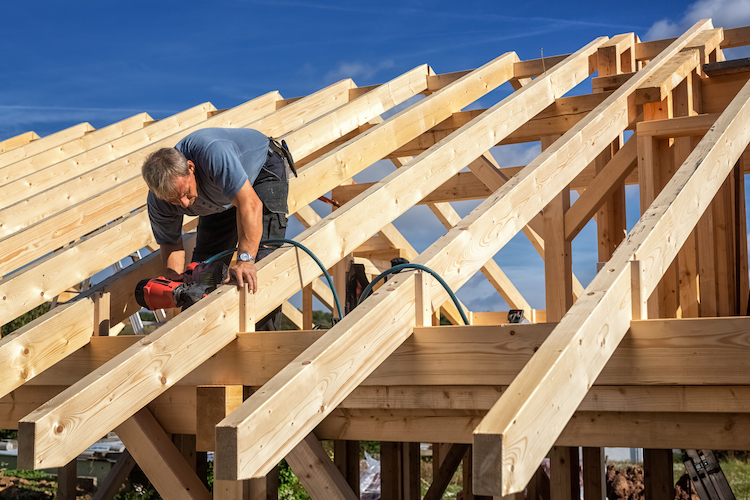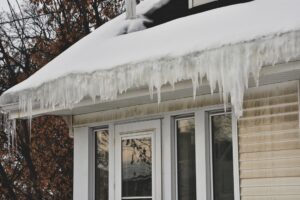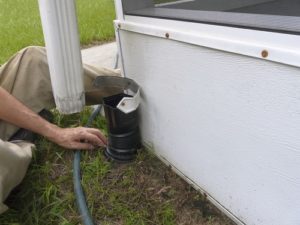
Have you ever seen a home without a roof? The only exception may be a newer build during the building process or a home with a tarp over the roof following severe weather. Every home needs a roof as it’s one of the most important parts of a home’s construction; they keep us dry and safe from the elements and possible danger.
Many homeowners are aware of the different kinds of roofing materials like asphalt shingles, metal, and even wood. Besides the material of a roof, do you know what goes underneath it or the other parts of the roof? Keep reading to learn about the anatomy of a roof and how all components work together to keep your family safe from the elements.
Structure
The first part of a roof is called the structure, otherwise known as the framework. Attached to the rest of the home during the initial building process, beams and trusses come together to form the shape of the roof. This framework will work as the foundation of the roof, supporting all other components like the sheathing and decking.
During the structural process, builders will determine the roof pitch and ridge of the roof to ensure water can safely drain from the roof to prevent leaks and other damage. A roof pitch (or slope) is the number of inches your roof rises for every foot of depth. For example, a 6/12 pitch represents a rise of 6 inches for every foot inward toward its peak, also known as its ridge. Every home’s roof has some sort of pitch or slope whether your home has a flat/low-slope, gable, hip, or metal roof.
Decking/Sheathing
The very first layer of your roof is called decking or sheathing. Decking works as a foundation for all other roofing materials to be built upon so the decking needs to be in great shape. Decking is made from wooden boards that are placed over the framework of the roof as we previously discussed. When installed, these wooden boards cover the framework and create a base for the rest of the roofing layers. Decking/sheathing needs to be in excellent condition to support a roof; new decking must be installed or replaced if boards are rotted or ruined.
Underlayment
Known as the second layer of a roof, the underlayment is placed directly over the decking/sheathing, underneath the shingles or other roofing material, and acts as a barrier to protect the decking from moisture damage. Underlayment not only protects the decking/sheathing from moisture damage but also helps improve insulation. Roof underlayment is made from felt or synthetic materials and must be used when installing a roof. Because the underlayment protects the decking, it’s important to select a quality underlayment material – a roofing contractor can work with you to select the best one for your home.
Coverings/Roofing Materials
The final layer of a roof is the covering or roofing material. There are a variety of roofing materials to choose from including asphalt shingles, metal, shake, stone, or even synthetic materials. Most homeowners install asphalt shingle roofs as they’re the most affordable, are durable, and have a relatively long lifespan.
The roofing material you choose can add value to your home if you choose to install roofing materials like cedar shakes or slate. It’s important to understand all roofing materials before you select one during the roofing installation process. Again, a roofing contractor can go over all the options and help you select the right one for your home and budget.
Other Components
The layers above make up most of the roof’s anatomy, however, other components play a large role in the roofing system. Other components like fastener attachments, flashing, and vents all work together to keep the roof safe from moisture damage.
The home’s gutter system and attic space play a huge role in the roofing system to ensure it is kept as dry as possible. A home’s gutter system functions to collect and carry water away from the roof, directing the water away from the home’s foundation and helping to prevent drainage issues. Without a quality gutter system installed, a roof could experience significant damage like leaks, warped shingles, damage to the roof’s underlayment, and so much more.
A home’s attic space also plays an important role in keeping the roof dry as it acts as a ventilation system to regulate the temperature and moisture levels.
It’s important for a homeowner to understand all parts of the roof and how the roof and gutters work together to protect our homes from drainage issues. The anatomy of a roof has many parts that work together to protect your home as much as possible.
If you need a new gutter system to help protect your home and roof, contact the experts at K-Guard. Our gutter product is the most durable on the market, offering complete protection from debris and pests entering the system and being able to form clogs. Our curved hood allows debris to simply slide off and only allows water to enter the system to move water throughout the system at a rapid pace. Constructed from heavy-duty aluminum, the K-Guard System resists corrosion and paint chips, looking pristine for the life of the home!
To install the K-Guard Leaf Free Gutter System, contact our team of professionals today. K-Guard is the premiere gutter company in Colorado, providing a leaf-free gutter solution for homeowners for many years. We proudly install the K-Guard Gutter System across the state of Colorado including, but not limited to, the following locations:
- Denver
- Colorado Springs
- Littleton
- Centennial
- Aurora
- Boulder
- Castle Rock
- Broomfield
- Fort Collins
- & so much more!



